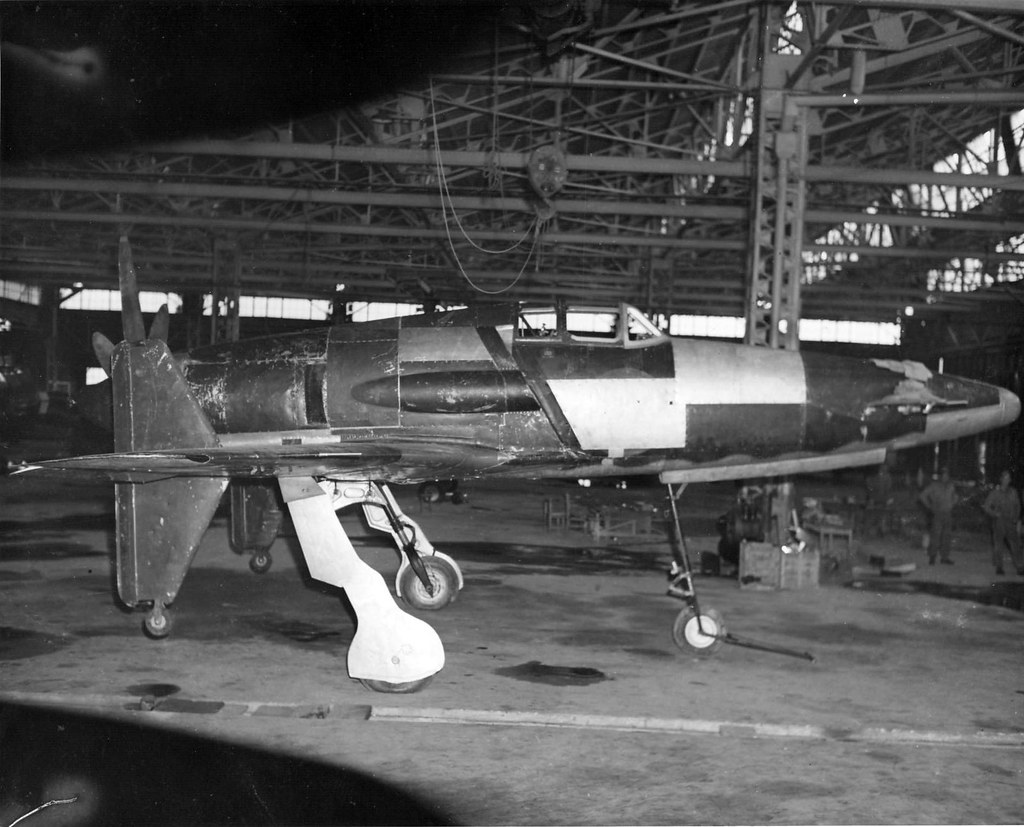#Kyushu J7W1 Shinden
Text
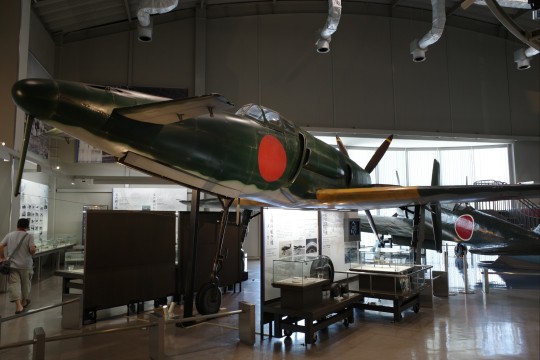
A full-scale replica of the Kyushu J7W1 Shinden (震電, "Magnificent Lightning") on display at the Tachiarai Peace Memorial Museum, July 2022.
source
62 notes
·
View notes
Text
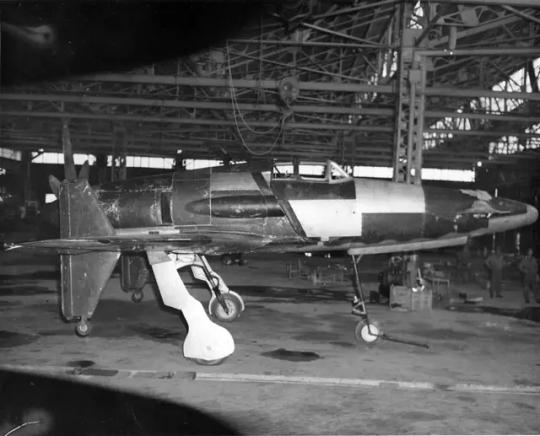
Kyushu J7W1 Type 18 Shinden discovered in a factory at Fukuoka, Japan, 10 Oct 1945, second of the two built and is now stored at the National Air and Space Museum in Washington DC.
99 notes
·
View notes
Text
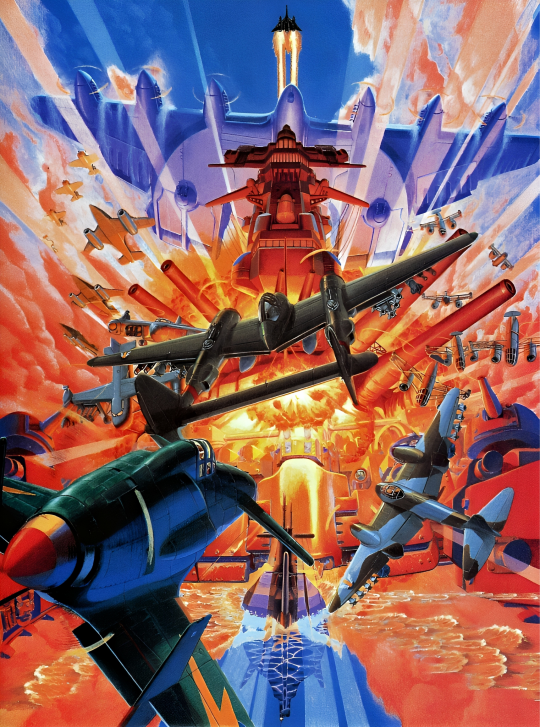
I'm a big fan of the 194X series of vertical shoot 'em ups by Capcom. This one for the 1995 arcade shooter 19XX: The War Against Destiny captures the frenetic action with the 3 player fighters (the Lockheed P-38 Lightning, deHavilland DH.98 Mosquito, and Kyushu J7W1 Shinden) diving headlong into battle with enemy fighters and bosses.
17 notes
·
View notes
Text
Ronnie Bell Following
Shinden J-7W1
Experimental high-speed coastal interceptor-fighter aircraft-launched short-range J7W1 Shinden "Type 18" ("Bright lightning") at a factory in Fuoke.
The aircraft was designed by Kyushu Hikoki k. k. was an all-metal plane cantilever, built according to the scheme "Duck". 18-cylinder radial air-cooled engine Mitsubishi MK9D KA1 power 2130 HP was the pilot's cabin (formerly similar engines with air cooling at the rear of the fuselage), the propeller is 3.4 m in diameter and a crew for aircraft with In the design originally provided for the possibility of installation on a new plane of two types of engines: the piston or turbojet.
In the nose of the fuselage had posted four 30-mm guns of Type 5 with fire rate of 450 rounds was regarded as a very powerful armament for its time,
The first flight took place only August 3, 1945, three months after the completion of the first prototype. The machine was recognized as a promising but limited in time to work on it further. At the end of 1945, the United States naval intelligence professionals fighter was pulled and among 145 other Japanese aircraft was sent to the United States for testing and evaluation. With the help of Japanese specialists aircraft was recovered and sent for tests at Wright Field now Wright-Patterson Air Force Base. The results impressed the American engineers, they were surprised by maneuvering characteristics. The aircraft pictured is the second of two built. Now a Museum in Maryland that is part of a National Aerospace Museum in Washington.
Via Flickr
29 notes
·
View notes
Photo

Personification of Japanese fighter Kyushu J7W1 Shinden.
The hairstyle by its form and shape was taken from the mandarin duck, because of the Canard arrangement of this plane, and because of this plane is Japanese, 'cause those ducks lives there, they are Eastern as the plane. The yellow-orange-red line on forelock is a reference to the name "Shinden" - "magnificent lightning".
Because Shinden-san was an abandoned as prototype I had a thought to dress her not only in the military uniform, but also in some traditional clothes - hakama. To fly in this isn't hard. At least, its technomagic! (and almost no scientifical logic) х3
She is courageous, audacious, brave, single-eyed, easy-going, honest, but acting in small radius, because of lack of energy, because her power is "going out" very strongly and quickly.
To cope/act with her is too hard, especially for the uneducated person.
Her qualities of temper are based on real characteristics of the project of this plane.
All along her life she is enemies with B-29 "Superfortress", because was created to fight her.
But according to history she had 0 fights and the the Americans reached her and "investigated" (uknowwhatimean)...
1 note
·
View note
Photo

Magnificent Lightning
The Kyushu J7W1 Shinden
https://www.deviantart.com/nerdomancer/art/Shinden-563238414
2 notes
·
View notes
Photo

Kyushu J7W1 Type 18 Shinden discovered in a factory at Fukuoka, Japan, 10 October 1945, second of the two built and is now stored at the National Air and Space Museum in Washington DC. http://wrhstol.com/2jQjZEx
16 notes
·
View notes
Text
This Day in Aviation History August 3rd, 1945 First flight of the Kyushu J7W Shinden.
This Day in Aviation History August 3rd, 1945 First flight of the Kyushu J7W Shinden.
The Kyūshū J7W1 Shinden (震電, “Magnificent Lightning”) fighter was a World War II Japanese propeller-driven aircraft prototype with wings at the rear of the fuselage, a nose mounted canard, and pusher engine.
Developed by the Imperial Japanese Navy (IJN) as a short-range, land-based interceptor, the J7W was a response to Boeing B-29 Superfortress raids on the Japanese home islands. For…
View On WordPress
0 notes
Photo
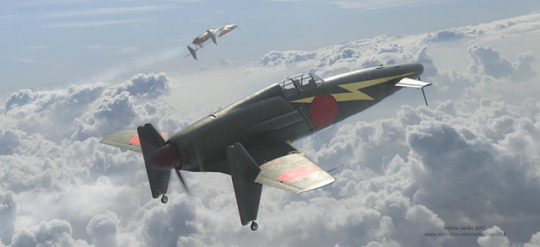
Kyushu J7W1 Shinden. A. Karidis. Extraño aparato japonés diseñado para atacar a los B-29 a gran altura. 2 prototipos construidos de los cuales 1 llegó a volar. Armado con 4 cañones de 30mm en el morro. https://ift.tt/2OSuOBb
0 notes
Text

Based on earlier design studies, the Shinden was conceived of by the Yokosuka Air Technical Depot in early 1943. The canard design had been proven by the J.N.A.F Aeronautical Engineering Arsenal using three tail first gliders (designated MXY6) built by the Chigasaki Manufacturing Company in 1943.
Originally recieving the designation of X-18, the design eventually ras redesignated the J7W1 and allocated the name Shinden (Magnificent Lightning). The Japanese Naval Air Force was so impressed with the design that the type was ordered into production before the first prototype was completed. The production contract was awarded to Kyushu Hikoki K.K. and construction of the two prototypes was commenced on June 4, 1944 at their Zasshonokuma factory.
The first prototype flew for the first time on August 3, 1945 at the Mushiroda J.A.A.F. base in Northern Kyushu. Both the Kyushu Zasshonokuma factory and Nakajima's Handa factory had reached advance tooling stages by this time with an estimated production rate of 150 aircraft per month.
Initial flight tests proved successful with only minor, and correctable, problems encountered. The second prototype was barely completed but never flew since the war ended Japanese combat aircraft development
7 notes
·
View notes
